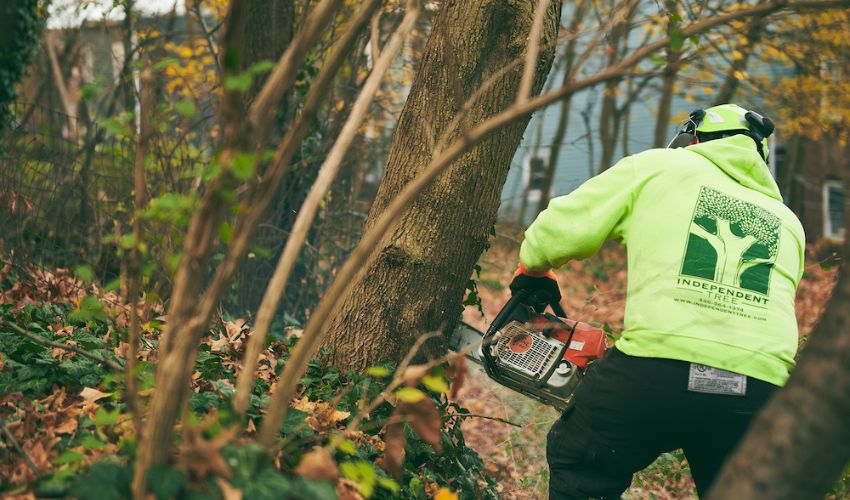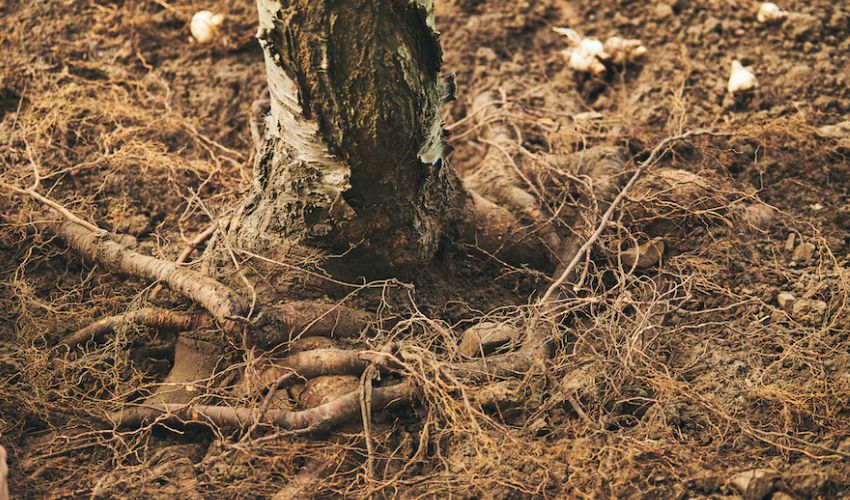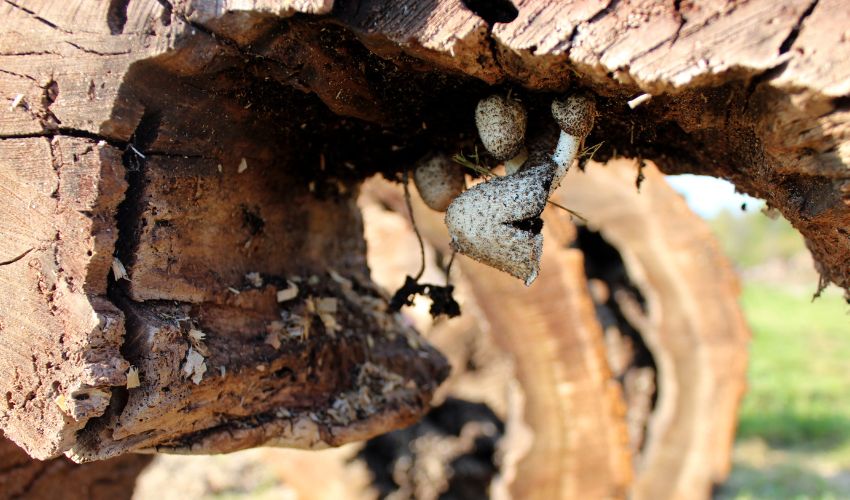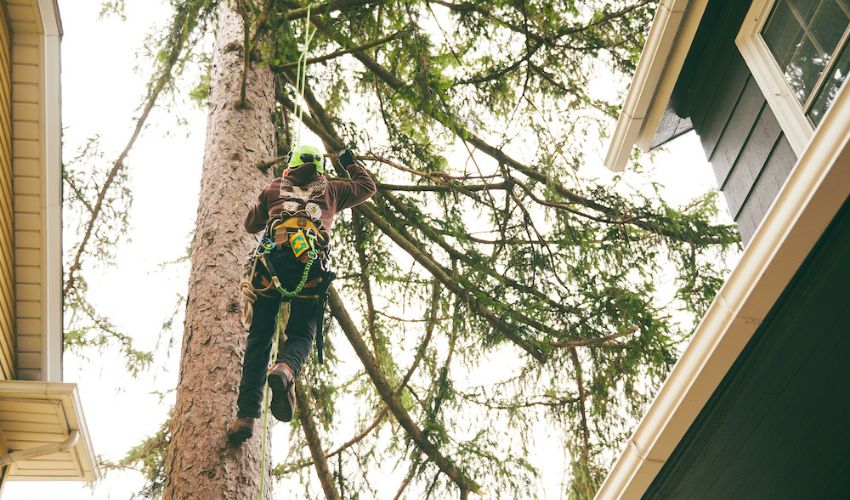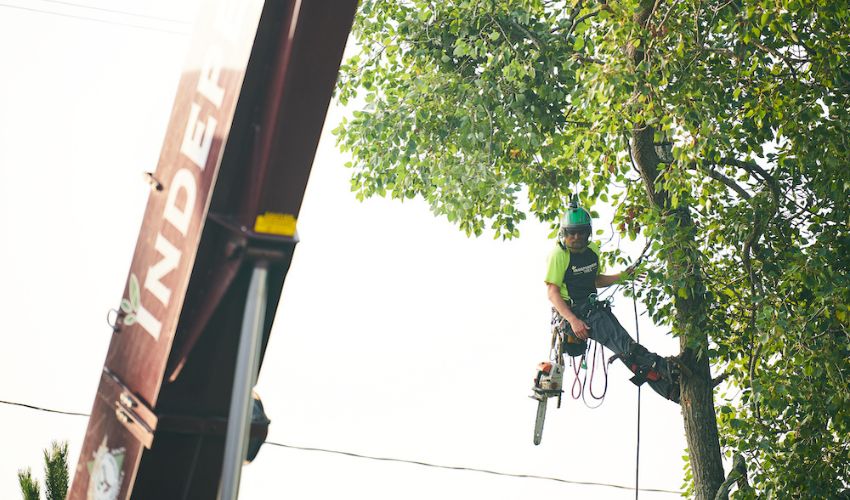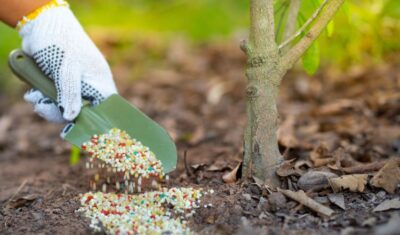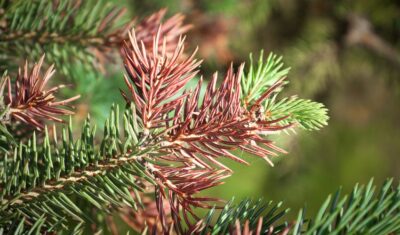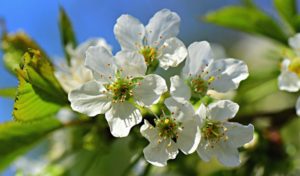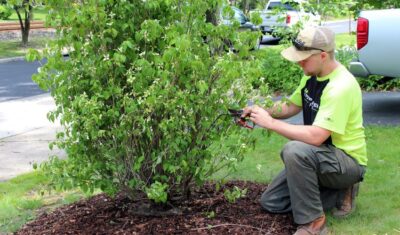While it is hard to say goodbye to a tree that has been on your property for years, sometimes the circumstances require a tree to be removed in order to protect your home.
Many times, it is obvious when a tree needs to be removed. It’s dead or clearly dying, is in the way, or was planted in the wrong location.
Sometimes, however, you may be unsure if removal is the right solution for your tree.
In this blog post, we go over six different signs that it’s best for your tree to be removed.
Is the Tree a Safety Risk?
The following are some tell-tale signs that a tree should be removed. Of course, when determining whether or not to remove a tree, we advise that you always consult a certified arborist or professional tree company. The experts can best determine whether your tree is posing a safety risk and should be removed.
1. The Tree is Leaning
A leaning tree can be the surest sign that it is at risk of falling. Find a spot in your yard that provides a full view of your tree to best assess whether your tree is leaning. If you do not remember your tree having a natural lean, a new lean may indicate that the tree is dying, that the ground around the tree is no longer supporting it, or that the roots have been damaged and can no longer hold the tree upright.
To check if your tree is likely to topple over, look for these signs:
- Super-saturated soil (usually after getting a lot of rain) – If you sink into the ground as you walk, the ground is probably unable to fully support and stabilize trees. Many trees fall over after significant rainfall and many more start to lean, putting them at high risk of being uprooted.
- Soil that’s heaving (lifting) or cracking on one side of the tree – This is an indication that the rootball is shifting and destabilizing the tree.
- Exposed roots (especially if you don’t remember seeing the roots before) – Whether it’s from erosion (such as after a flood) or the ground subsiding, newly exposed roots likely mean that they’re starting to pull out of the ground.
- Multi-stemmed trees and those with long, heavy branches are also more likely to topple.
A leaning tree may not be a hazard, but without a professional inspection, you can’t be sure. The sooner your tree is inspected, the better. Remember that any tree that is within falling range of homes, cars, utility lines, or sidewalks is considered a hazard if it’s leaning because it’s not structurally sound.
2. Decaying Roots
Are the roots of your tree showing visible signs of decay? Decaying or rotted roots are evidence that the tree’s structural support is damaged.
If the roots have been damaged by a lawn mower, animals, or construction, it can impact how to tree gathers nutrients and water. If any construction or landscaping has been done to your home or yard lately, there is a chance that a tree’s roots have been damaged or the ground it has been disturbed, leading to harm to the tree.
Roots also suffer during times of extended drought. Due to the lack of water, some sections of roots can die.
Sometimes a tree can not recover from root damage; it will decline and eventually die.
3. Storm Damage
If your trees recently endured a strong storm, they may have suffered significant damage. High winds, heavy snow or ice loads, or lightning can all result in tree damage.
After storms, the most noticeable damage is from fallen trees or broken limbs, but trees that don’t have either of those signs can still be dangerous. Large branches could have broken off but not fallen, which can cause injury and extensive damage if they fall on a person, home, or car. If the tree has been heavily damaged from a storm, you may notice the trunk splitting or branches cracking. Safety concerns are high as the tree is unstable.
Because of this, it is best to have your storm-damaged trees assessed by a professional.
4. Fungus
Fungus on your trees will be visible in mushroom-like spores and soft bark, especially near the base of the tree or the roots. If fungus is not recognized and treated in time, the damage to the health of your tree may be severe.
Fungi usually enter the tree through a wound that damages the protective bark. Then the fungus causes the tree to decay.
5. Odd Shape
Has your tree taken on a peculiar structure? This can be caused by a severe storm or improper pruning.
One method of improper pruning that can alter the shape of your tree is called using “heading cuts” or tree topping. A topped tree not only looks bad, but it can cause the tree to send up multiple, weak shoots from the topped branches. A topped tree is a stressed tree and sometimes does not survive this outdated and extreme pruning method.
Learn more about pruning mistakes that can kill your trees >>
An odd shape can also indicate potential damage to the strength of the tree’s foundation.
6. Close Proximity to Your Home
A good rule of thumb is that large trees should be planted at least 15-20 feet away from your home. If they are planted any closer, the tree’s roots can cause damage to your home’s foundation. There is also the heightened risk of a tree branch, or the tree itself, falling on your home, and branches damaging siding, gutters, roofing, or windows.
If trees are planted too closely together, this can affect their health and growth. In this case, the trees might benefit from nearby trees being removed.
Making the Call
If you’ve read through all of the above and are still not sure if your tree needs to be removed, it’s time to call in a tree care professional.
Skilled professionals are trained to recognize a tree that can be saved and one that needs to be removed. If it is in the wrong location, is a safety concern, or is dying, the tree should be removed, and the arborist can suggest a different tree to take its place if the conditions are favorable.
The professionals at Independent Tree can help you make the tough decision of whether or not to remove a tree from your property. Sometimes, a tree can be saved with proper pruning, cabling or bracing to support the branches, or treatments to improve its overall health. But in other situations, tree removal is the only reasonable option.
Don’t forget that the best way to keep a tree healthy and safe is through regular care and maintenance. Contact us today if you would like to schedule or discuss a tree inspection or removal.
Remember that Independent Tree is here to help you with each step of having your tree removed. Give us a call today at 440-276-1108 or email us at info@independenttree.com.
Schedule Your Professional Tree Removal
Independent Tree has the knowledge, skills, and experience to safely and quickly remove your trees.Recent Articles
Topics
About The Author

STAY IN THE LOOP
WITH OUR
LATEST UPDATES
"*" indicates required fields

